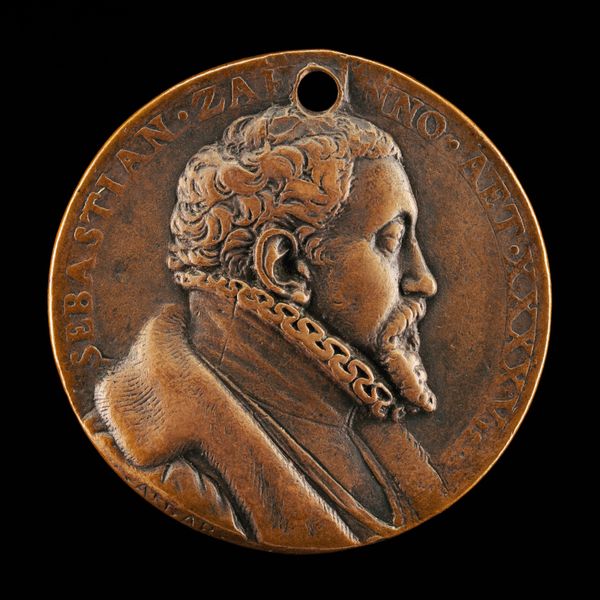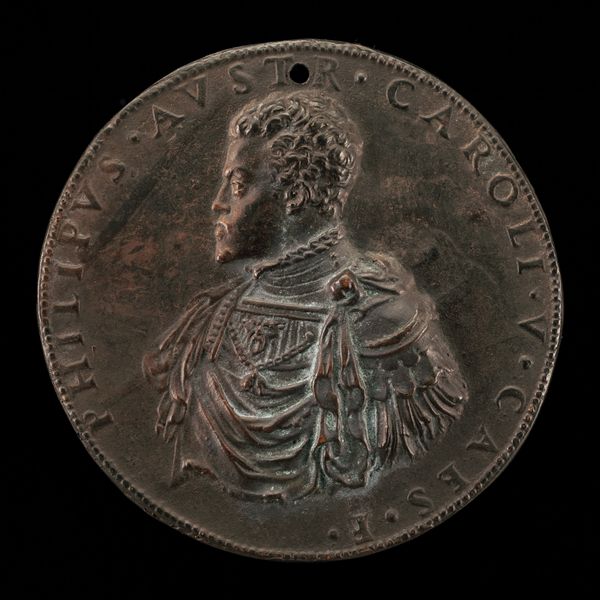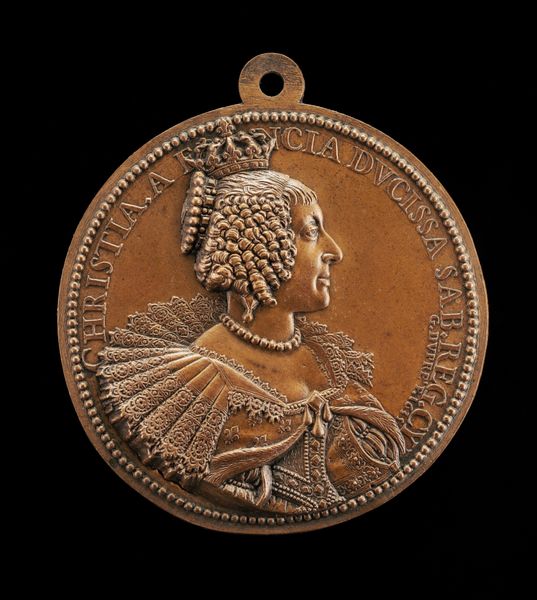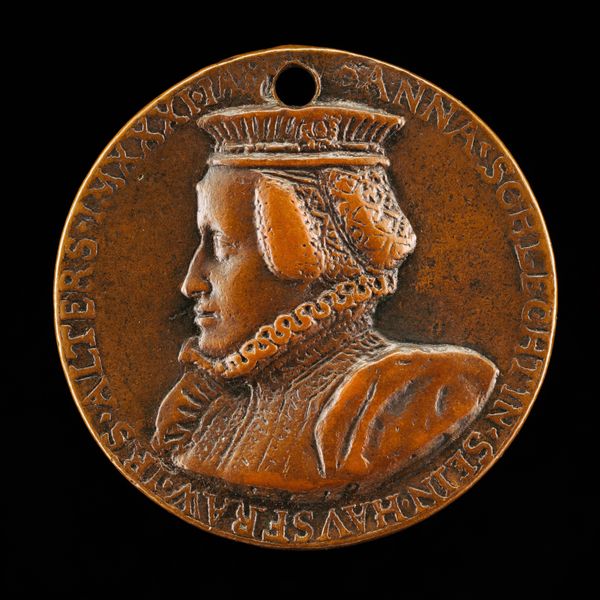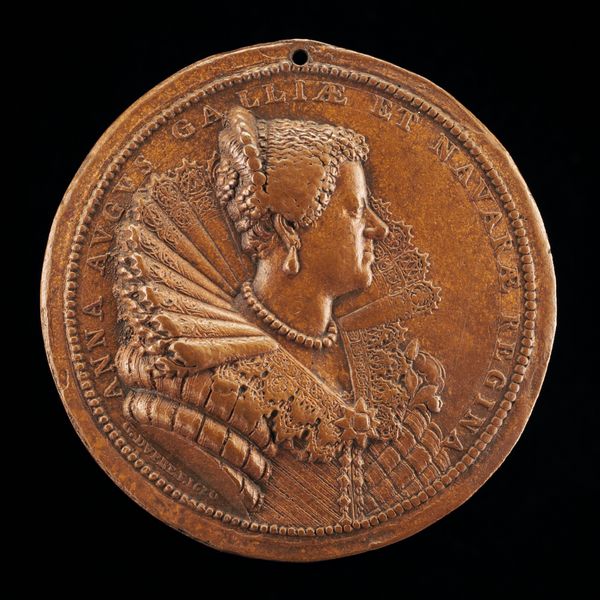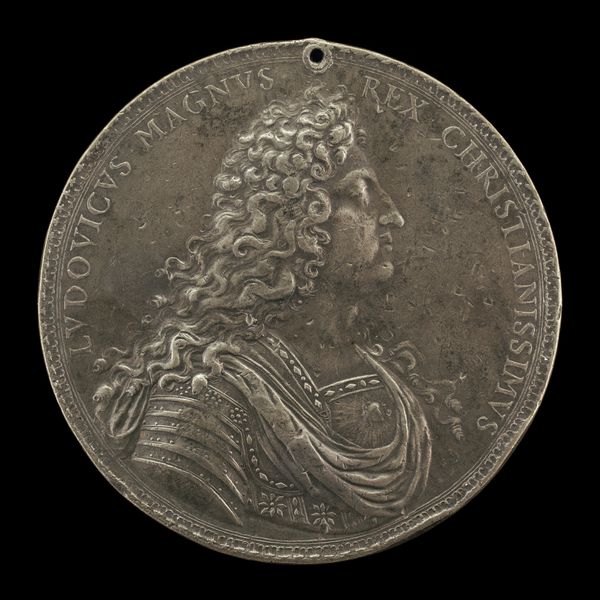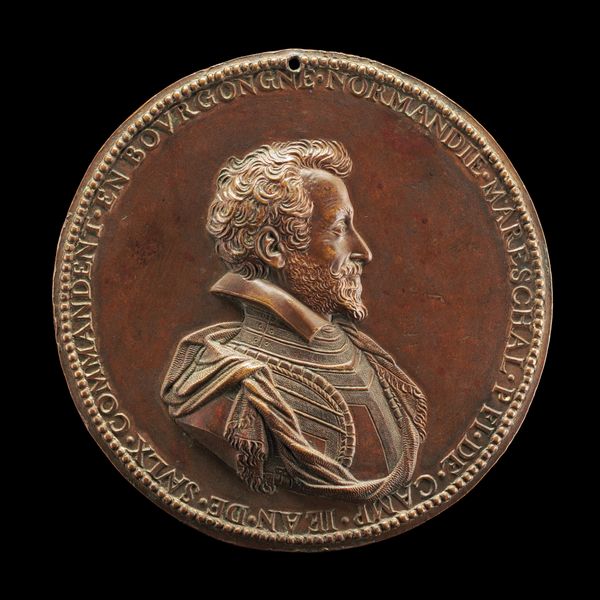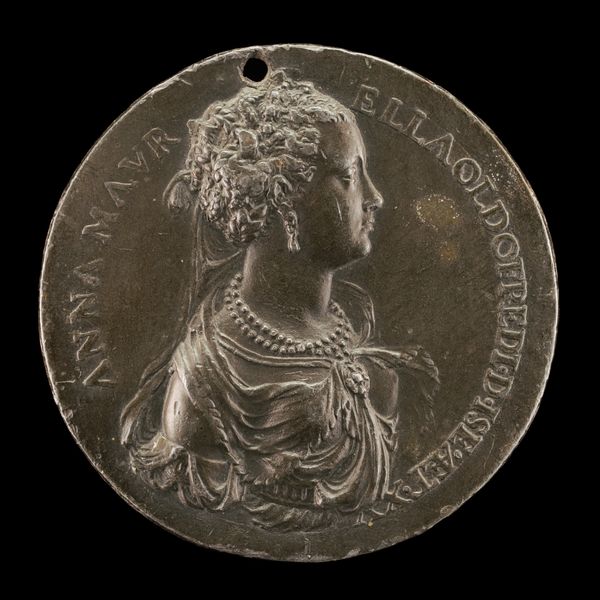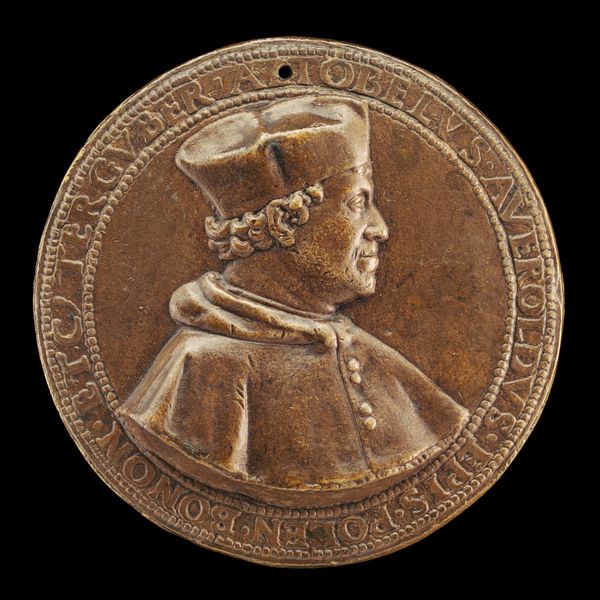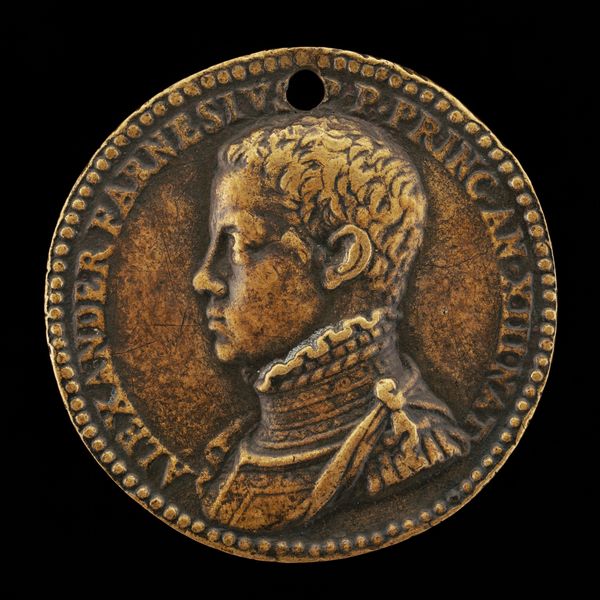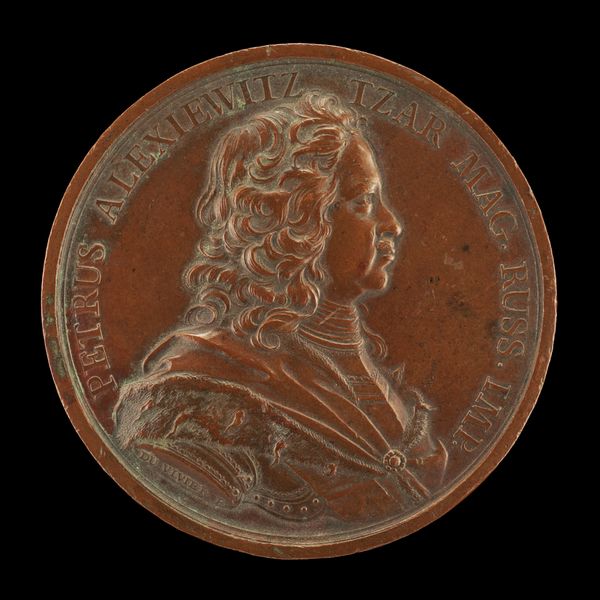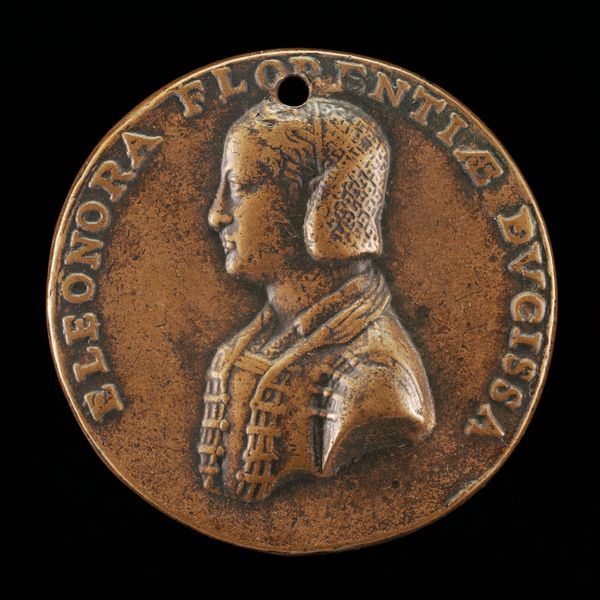![Louis XIII, 1601-1643, King of France 1610 [obverse] by Guillaume Dupré](/_next/image?url=https%3A%2F%2Fd2w8kbdekdi1gv.cloudfront.net%2FeyJidWNrZXQiOiAiYXJ0ZXJhLWltYWdlcy1idWNrZXQiLCAia2V5IjogImFydHdvcmtzL2NhZDE4YTBiLWUwM2MtNDQyYy04NmU2LWIyZWY1ODY5ZmNiNC9jYWQxOGEwYi1lMDNjLTQ0MmMtODZlNi1iMmVmNTg2OWZjYjRfZnVsbC5qcGciLCAiZWRpdHMiOiB7InJlc2l6ZSI6IHsid2lkdGgiOiAxOTIwLCAiaGVpZ2h0IjogMTkyMCwgImZpdCI6ICJpbnNpZGUifX19&w=3840&q=75)
relief, bronze, sculpture
#
portrait
#
medal
#
baroque
#
sculpture
#
relief
#
bronze
#
sculpture
#
history-painting
Dimensions: overall (diameter): 6.6 cm (2 5/8 in.) gross weight: 85.15 gr (0.188 lb.) axis: 12:00
Copyright: National Gallery of Art: CC0 1.0
Editor: So, here we have a bronze relief, a portrait medal of Louis XIII from 1623, sculpted by Guillaume Dupré. There’s something quite striking about the profile, so sharply defined against the circular form. How do you read its composition? Curator: It is immediately evident that Dupré utilizes the circular format not merely as a boundary, but as an integral element that accentuates the royal profile. The curvature of Louis XIII’s brow and nose mirrors the coin's edge, establishing a visual harmony. Notice also the calculated juxtaposition of textures: the smoothness of the background offset by the intricate detailing of his collar and hair. How does the texture interplay affect your perception? Editor: I hadn’t noticed how his collar and hair command your focus. There is a very deliberate contrast between those meticulously-rendered details and the figure-ground relationship. Do you see the inscription framing the portrait as simply informational, or does it play a formal role as well? Curator: The inscription serves both an informative and compositional role. Note how its serifs and consistent letter spacing contribute to the overall texture and rhythm of the work, serving as a visual counterpoint to the figural details at the medal's center. This integration transforms text from mere label to compositional component. Editor: That’s fascinating. The medal feels so unified now. I hadn't thought of the inscription as more than just text, but you've helped me see it as another part of the artistic texture of the object. Curator: Exactly. Formal analysis allows us to perceive not only what is represented, but how representation itself shapes our understanding.
Comments
No comments
Be the first to comment and join the conversation on the ultimate creative platform.
